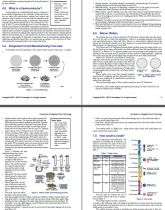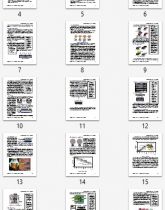Skripta: Introduction to Integrated Circuit Technology
Skrýt detaily | Oblíbený- Kvalita:91,2 %
- Typ:Skripta
- Univerzita:České vysoké učení technické v Praze
- Fakulta:Fakulta elektrotechnická
- Kategorie:Technika
- Podkategorie:Technologie
- Předmět:Výkonové součástky a technologie
- Autor:agata.kucova
- Ročník:2. ročník
- Rozsah A4:21 strán
- Zobrazeno:1 149 x
- Stažené:0 x
- Velikost:0,7 MB
- Formát a přípona:PDF dokument (.pdf)
- Jazyk:anglický
- ID projektu:6116
- Poslední úprava:06.07.2015
1.0. Introduction
At IC Knowledge, we have found a wide diversity in our clients and web site visitors with respect to their understanding of Integrated Circuit (IC) technology. Some of the people we interact with have a strong understanding of IC technology, but there is also a substantial group that purchases or uses the technology without a strong understanding. For the later group, we though it would be useful to produce a basic introduction to IC technology, and that is the objective of this publication.
We have written this publication assuming no more technical background than a high school education, and any technical terms will be defined when they are introduced. We have attempted to provide a good high level overview of the technology in this document, if you have questions about the content or would like to provide us with feedback, please e-mail us at info@icknowledge.com.
2.0. Basic electronic concepts
Electronic circuits regulate and control the flow of electric current. Electric current is the flow of electrons, the tiny subatomic particles that surround the nucleus of atoms. Electrons carry a fixed negative electric charge and the movement of electrons carries charge from one location to another - the flow of electrons is referred to as electric current. Electric current is driven by a difference in potential from one location to another measured in volts. Electric current flows easily through materials that are conductors, and is blocked by materials that are insulators. The amount of resistance that a material presents to the flow of electric current is logically called resistance. Conductors have low resistance to the flow of current and insulators have extremely high resistance (essentially infinite until the voltage is so high that the material breaks down). For a given voltage, the higher the resistance the less current that will flow and the lower the resistance the higher the current that will flow. Conversely, for a given resistance, the higher the voltage the more current that will flow and the lower the voltage the less current that will flow.
At IC Knowledge, we have found a wide diversity in our clients and web site visitors with respect to their understanding of Integrated Circuit (IC) technology. Some of the people we interact with have a strong understanding of IC technology, but there is also a substantial group that purchases or uses the technology without a strong understanding. For the later group, we though it would be useful to produce a basic introduction to IC technology, and that is the objective of this publication.
We have written this publication assuming no more technical background than a high school education, and any technical terms will be defined when they are introduced. We have attempted to provide a good high level overview of the technology in this document, if you have questions about the content or would like to provide us with feedback, please e-mail us at info@icknowledge.com.
2.0. Basic electronic concepts
Electronic circuits regulate and control the flow of electric current. Electric current is the flow of electrons, the tiny subatomic particles that surround the nucleus of atoms. Electrons carry a fixed negative electric charge and the movement of electrons carries charge from one location to another - the flow of electrons is referred to as electric current. Electric current is driven by a difference in potential from one location to another measured in volts. Electric current flows easily through materials that are conductors, and is blocked by materials that are insulators. The amount of resistance that a material presents to the flow of electric current is logically called resistance. Conductors have low resistance to the flow of current and insulators have extremely high resistance (essentially infinite until the voltage is so high that the material breaks down). For a given voltage, the higher the resistance the less current that will flow and the lower the resistance the higher the current that will flow. Conversely, for a given resistance, the higher the voltage the more current that will flow and the lower the voltage the less current that will flow.


